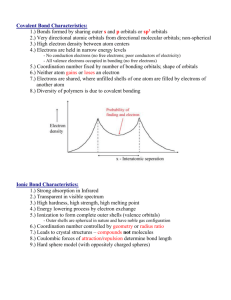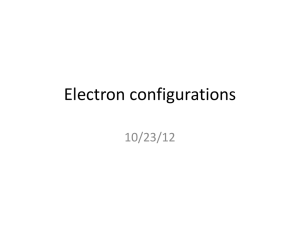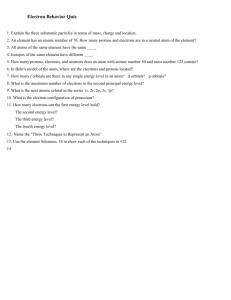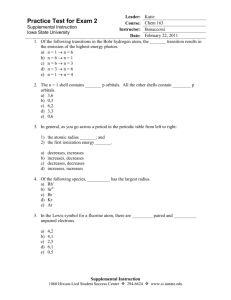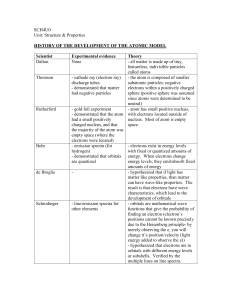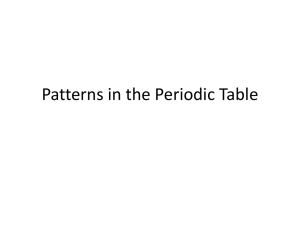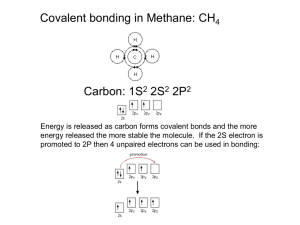Honors VSEPR and Hybridization Notes
advertisement
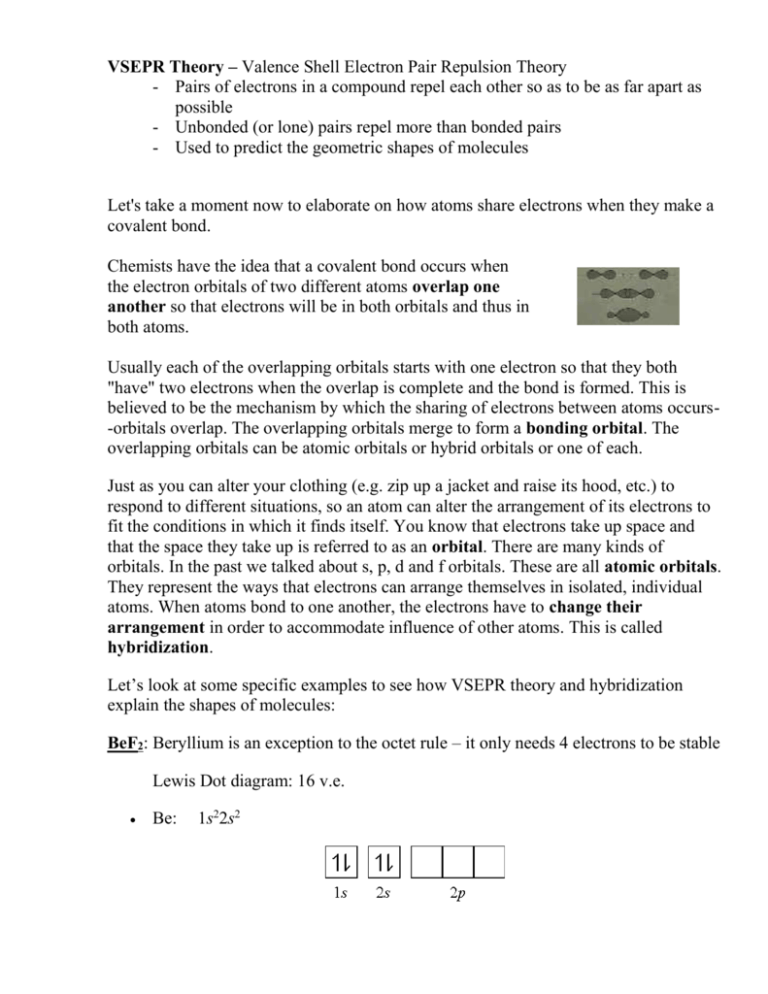
VSEPR Theory – Valence Shell Electron Pair Repulsion Theory - Pairs of electrons in a compound repel each other so as to be as far apart as possible - Unbonded (or lone) pairs repel more than bonded pairs - Used to predict the geometric shapes of molecules Let's take a moment now to elaborate on how atoms share electrons when they make a covalent bond. Chemists have the idea that a covalent bond occurs when the electron orbitals of two different atoms overlap one another so that electrons will be in both orbitals and thus in both atoms. Usually each of the overlapping orbitals starts with one electron so that they both "have" two electrons when the overlap is complete and the bond is formed. This is believed to be the mechanism by which the sharing of electrons between atoms occurs-orbitals overlap. The overlapping orbitals merge to form a bonding orbital. The overlapping orbitals can be atomic orbitals or hybrid orbitals or one of each. Just as you can alter your clothing (e.g. zip up a jacket and raise its hood, etc.) to respond to different situations, so an atom can alter the arrangement of its electrons to fit the conditions in which it finds itself. You know that electrons take up space and that the space they take up is referred to as an orbital. There are many kinds of orbitals. In the past we talked about s, p, d and f orbitals. These are all atomic orbitals. They represent the ways that electrons can arrange themselves in isolated, individual atoms. When atoms bond to one another, the electrons have to change their arrangement in order to accommodate influence of other atoms. This is called hybridization. Let’s look at some specific examples to see how VSEPR theory and hybridization explain the shapes of molecules: BeF2: Beryllium is an exception to the octet rule – it only needs 4 electrons to be stable Lewis Dot diagram: 16 v.e. Be: 1s22s2 In the ground state, there are no unpaired electrons (the Be atom is incapable of forming a covalent bond with a fluorine atom However, the Be atom could obtain an unpaired electron by promoting an electron from the 2s orbital to the 2p orbital: This would actually result in two unpaired electrons, one in a 2s orbital and another in a 2p orbital The Be atom can now form two covalent bonds with fluorine atoms We would not expect these bonds to be identical (one is with a 2s electron orbital, the other is with a 2p electron orbital) However, the structure of BeF2 is linear and the bond lengths are identical We can combine wavefunctions for the 2s and 2p electrons to produce a "hybrid" orbital for both electrons This hybrid orbital is an "sp" hybrid orbital (http://www.mhhe.com/physsci/chemistry/essentialchemistry/flash/hybrv18.swf) The orbital diagram for this hybridization would be represented as: Let’s fill in this type of molecular geometry on the grid that I gave you. This shape is called linear. The pendant atoms are 180 apart. That is as far apart as their electrons can get. Now we will look at the other possible shapes and hybridizations. Here’s something to keep in mind - whenever orbitals are mixed (hybridized): The number of hybrid orbitals produced is equal to the sum of the orbitals being hybridized Each hybrid orbital is identical except that they are oriented in different directions BF3 Boron electron configuration: Boron will need 3 unpaired electrons to form3 bonds with F. The three sp2 hybrid orbitals have a trigonal planar arrangement to minimize electron repulsion NOTE: sp2 refers to a hybrid orbital being constructed from one s orbital and two p orbitals. Although it looks like an electron configuration notation, the superscript '2' DOES NOT refer to the number of electrons in an orbital. CH4 Carbon electron configuration: Carbon will need 4 unpaired electrons to form4 bonds with H. Thus, using valence bond theory, we would describe the bonds in methane as follows: each of the carbon sp3 hybrid orbitals can overlap with the 1s orbitals of a hydrogen atom to form a bonding pair of electrons. This shape is called tetrahedral. H2O Oxygen: This shape is called bent. NH3 Atoms in the third period and higher can utilize d orbitals to form hybrid orbitals PF5 Similarly, hybridizing one s, three p and two d orbitals yields six identical hybrid sp3d2 orbitals. These would be oriented in an octahedral geometry.
